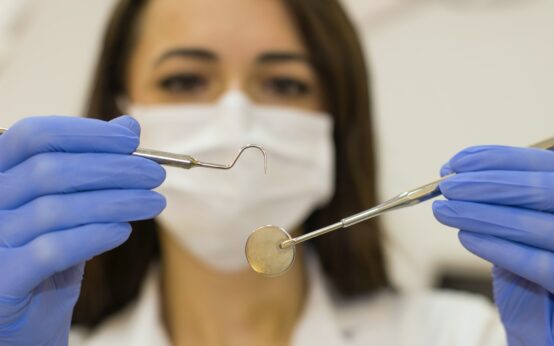Even if you don't have a broken tooth, a chipped tooth can lead to problems later on, such as infection. For this reason, it is essential to see a dentist as soon as possible if you notice a chip. Not only will a dentist be able to repair your tooth, but he can also treat other dental conditions. Here are some of the most common treatments for chipped teeth. These include dental bonding, root canals, and tooth extraction.
Table of Contents
Dental bonding
Dental bonding is a relatively quick procedure used to repair chipped or cracked teeth. The material used for this procedure closely resembles real tooth enamel, and it can be shaped to match your existing teeth. It is a good choice for minor cosmetic fractures, but more serious issues may require a porcelain veneer or other dental restoration. Patients with significant cosmetic fractures should consult with their dentists to determine which treatment options are best for their specific case.
The procedure is relatively simple, but there are certain guidelines you should follow. You should brush and floss twice a day, floss at night, and use antiseptic mouthwash regularly. The result should last three to ten years but may need repair if you're hard on your teeth. Avoid chewing on your fingernails or hard plastic containers. Also, avoid chewing on ice or other objects with sharp edges. Although dental bonding doesn't require special care, you should follow good oral hygiene practices after the procedure.
After preparing the surface of the tooth, the dentist will apply a conditioning liquid to make it easier for the resin to adhere to the tooth. After the conditioning process, tooth-colored putty-like material is applied to the tooth and molded into the desired shape. Once the putty-like material is set, the dentist will trim and polish the tooth. The entire process may take between 30 minutes and an hour.
While dental bonding is typically the easiest option for chipped teeth, there are certain risks associated with it. While it does not last for a lifetime, it can be a good option for some people. One of the biggest risks is the possibility of complications. Patients must discuss this with their dentist before undergoing the procedure. However, the procedure does have advantages, and it is also a popular alternative to mechanical braces. It is a simple procedure that usually takes just two or three visits to complete. Patients can often leave the office with a trial smile after the first visit. The permanent smile is applied during the second visit.
After undergoing dental bonding, you must follow certain aftercare instructions to protect the restoration. Avoid chewing on pens, pencils, or fishing lines after the procedure. This can lead to the discoloration of the new bonding. Dental bonding is also one of the cheapest procedures available in the dental industry. Unlike traditional cosmetic procedures, dental bonding does not require local anesthesia. This makes it one of the most convenient ways to restore chipped or cracked teeth.
Fillings
Chipped teeth can be repaired with dental bonding. If the chip is small, however, you may need a crown. A dentist can also use dental bonding to repair small chips below the gum line. In more severe cases, however, the chipped tooth may require extraction or replacement. Fillings are the most common form of repair for chipped teeth. These procedures protect the tooth by filling it with a metal or porcelain alloy.
Dental bonding is another option for fillings. This treatment is common in cosmetic dentistry. Essentially, a composite resin is applied to the tooth and sculpted to fit the shape and color. The resin is cured using UV light. This process typically does not require numbing. You can relax in the waiting room by bringing a favorite CD or audio stand-up comedy. It is important to visit the dentist regularly to ensure your oral health.
Cracked tooth syndrome occurs when you overbrush or bite down on the mouth too hard. This results in microcracks in the teeth. Cracked teeth can also lead to toothache with no visible cause. Even if cracks are tiny, they allow bacteria to enter the tooth and the surrounding gum tissue. Getting a broken filling repaired is important to protect your oral health and appearance. You should also see a dentist if your chipped tooth is causing you any pain.
Depending on the extent of damage, you may need to have a dental inlay or an onlay. Inlays are prefabricated in a dental laboratory, and they seal the root and cover the top biting surface. Roots are susceptible to infection, and a dentist can clean up this area and restore your teeth to normal function. Inlays, on the other hand, are permanent and are made of durable material.
In some severe cases, you may require a root canal to save your tooth. This procedure is often painless and only takes 15-20 minutes. After the procedure, your rescued tooth is ready for normal use. You may be asked to avoid eating or drinking hot and spicy foods for a day to prevent infection. This can cause serious problems for your oral health. Your dentist should be able to help you determine if you need a root canal, as this can save your tooth.
Root canals
If you've chipped or cracked your tooth, a root canal might be your best option. This treatment involves extracting the pulp – a soft, fibrous tissue that surrounds the root of your tooth. The removal of this pulp prevents future toothaches and inflammation. The tooth is then filled and sealed with cement. Following the procedure, you should schedule a checkup with a dentist to ensure that the tooth is healthy and that the treatment is working properly.
The reason why your dentist performs root canals for chipped teeth is a variety of factors. The primary objective is to save the tooth from decay. However, a dentist may also perform root canals to save a tooth with a broken, chipped, or fractured root. Even if you don't feel pain, you should visit a dentist immediately. Your teeth should be checked every six months to ensure that they're healthy and free of infections.
Infection is the number one reason for root canals for chipped teeth. If the infection has spread to the surrounding area, it may spread. Oftentimes, pain is accompanied by inflammation. But with proper care, the procedure can be a pain-free solution. You will soon be able to smile again without discomfort. A root canal is the best option to save a chipped tooth. If you've suffered a chipped tooth, make an appointment with a dentist today to get the treatment you need.
Another reason to visit a dentist for a root canal is if you feel constant pain in your tooth. A constant pain can be a sign of a serious infection or decay. It may affect your jaw, face, other teeth, and even the bone surrounding the tooth. It could also be the result of a cavity or impacted tooth. There are many other reasons that you may need to undergo a root canal, and it is important to get it checked by a dentist if you experience any of these symptoms.
Another reason for root canals for chipped teeth is that they are an excellent option for many people with cracked or chipped teeth. Unlike dental implants, a root canal is an alternative to removing the tooth. After the procedure, the damaged tooth can be restored to its original shape and function. In some cases, a crown is all that is needed to restore a chipped tooth. When a root canal is done, your dentist will place a temporary crown on top until your permanent one is prepared.
Tooth extraction
Oftentimes, tooth decay can lead to a chipped tooth or crack. While minor cracks and chips may be treated with a filling, more extensive damage will require tooth extraction. Your dentist will determine the extent of the damage by looking at the tooth and taking dental x-rays. A dentist will also examine your bite to see how much of the tooth is affected. Although chipped teeth don't necessarily require tooth extraction, they should always be seen by a dentist to avoid further damage.
Before an extraction, it's a good idea to avoid unnecessary talking or eating. After tooth extraction, a dentist will likely send you home with sterile gauze to keep the site clean and moist. Make sure to change the gauze frequently as the bleeding will continue. If bleeding persists after the extraction, make an appointment with your dentist within 24 hours. Heavy bleeding can also require a follow-up visit.
Before undergoing a tooth extraction, you should notify your dentist of any illnesses you may be experiencing. If you are undergoing surgery, you may be under the influence of anesthesia or be suffering from a cold or flu. A medical condition such as vomiting or nausea may lead to an increase in pain during the procedure. Your dentist can also recommend a different method of tooth extraction if you're suffering from a serious illness.
In some cases, the broken piece of a tooth may migrate to the jaw surface. In this case, surgical extraction is necessary to remove it. The gum tissue is separated from the tooth root, and flaps are placed and removed to expose the bone. If the piece of the tooth is not completely removed with the flaps, the dentist will likely recommend removing it surgically. If the fracture is too extensive, the tooth may need to be extracted.
The procedure can take between ten minutes and an hour. Your dentist will discuss the time needed to complete the extraction with you at your first appointment. The length of time can vary depending on the extent of work performed. A surgical extraction can take more than one hour, so you should plan accordingly. After the extraction, you'll be asked to follow certain procedures afterward. Post-operative care after the extraction process is crucial to a successful outcome.
Sources:


 Are Temporary Veneers Worth the Trouble?
Are Temporary Veneers Worth the Trouble?  Should You See a Dentist For Chipped Teeth?
Should You See a Dentist For Chipped Teeth?  Tooth Extraction – What to Expect, Anesthesia, the Recovery Process, and Complications
Tooth Extraction – What to Expect, Anesthesia, the Recovery Process, and Complications